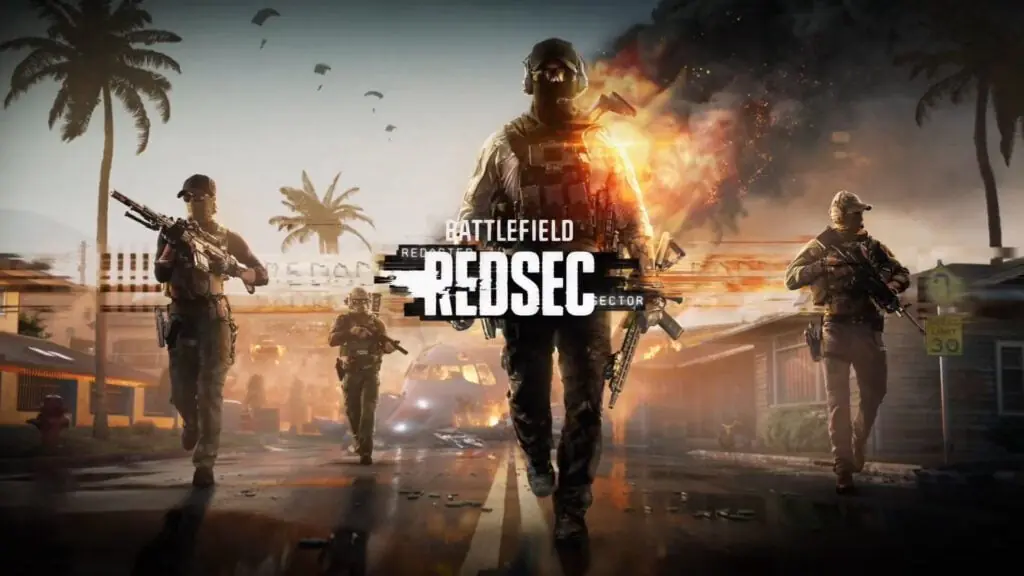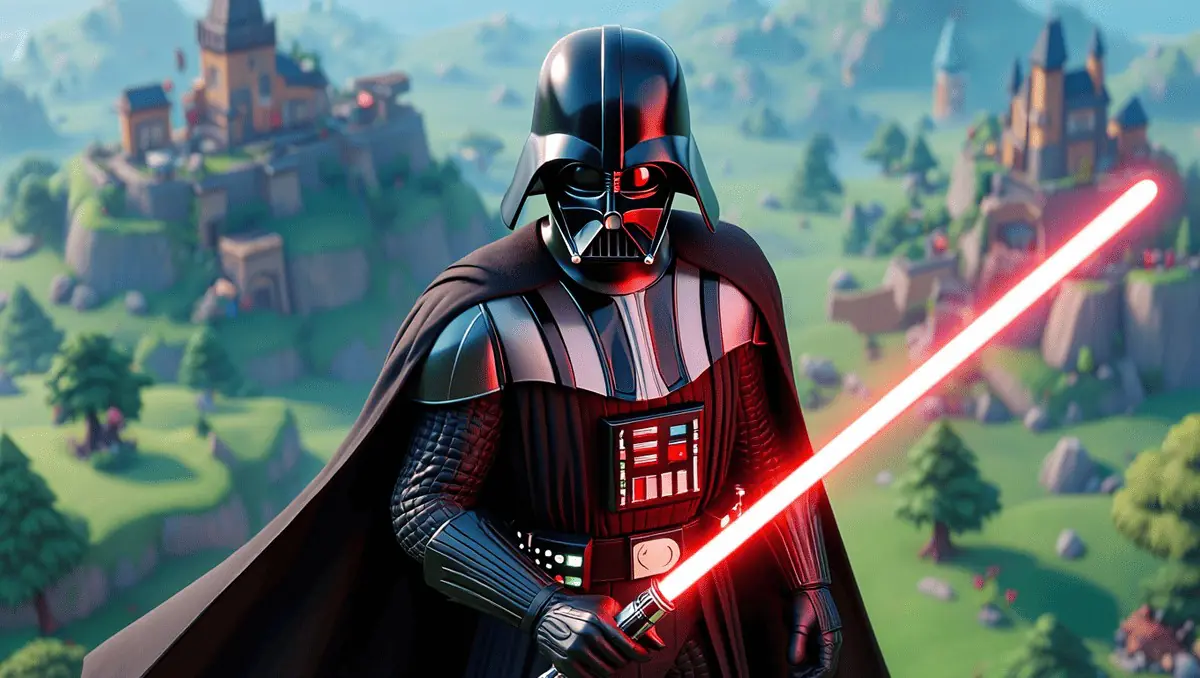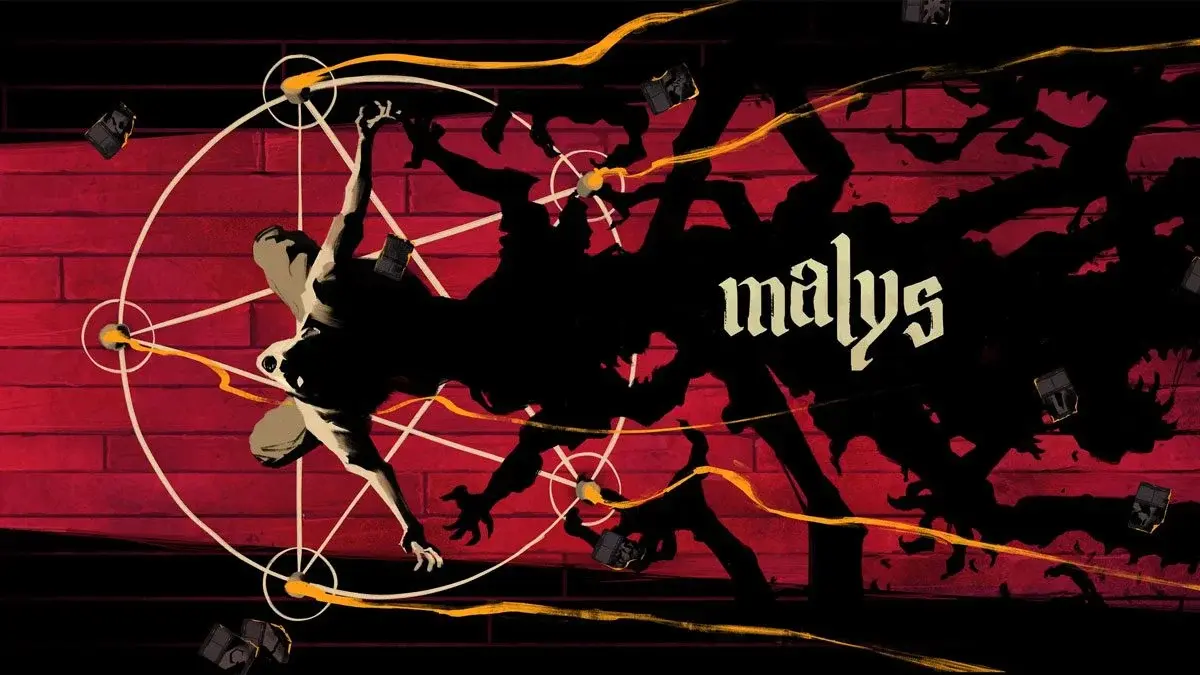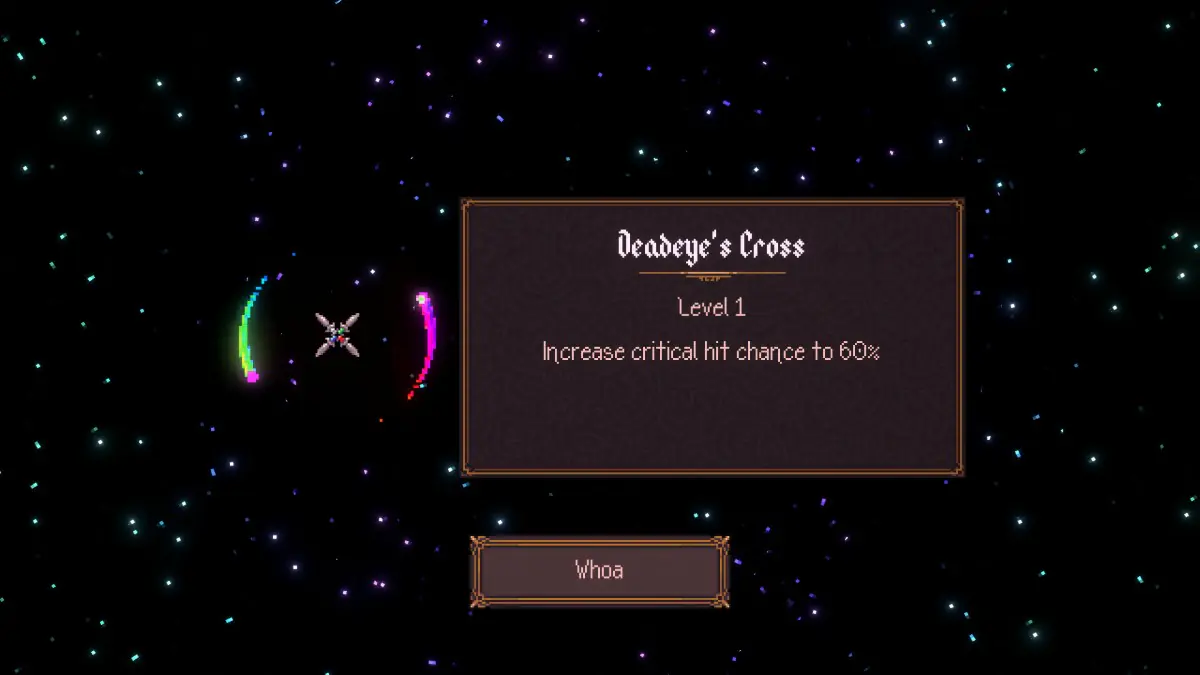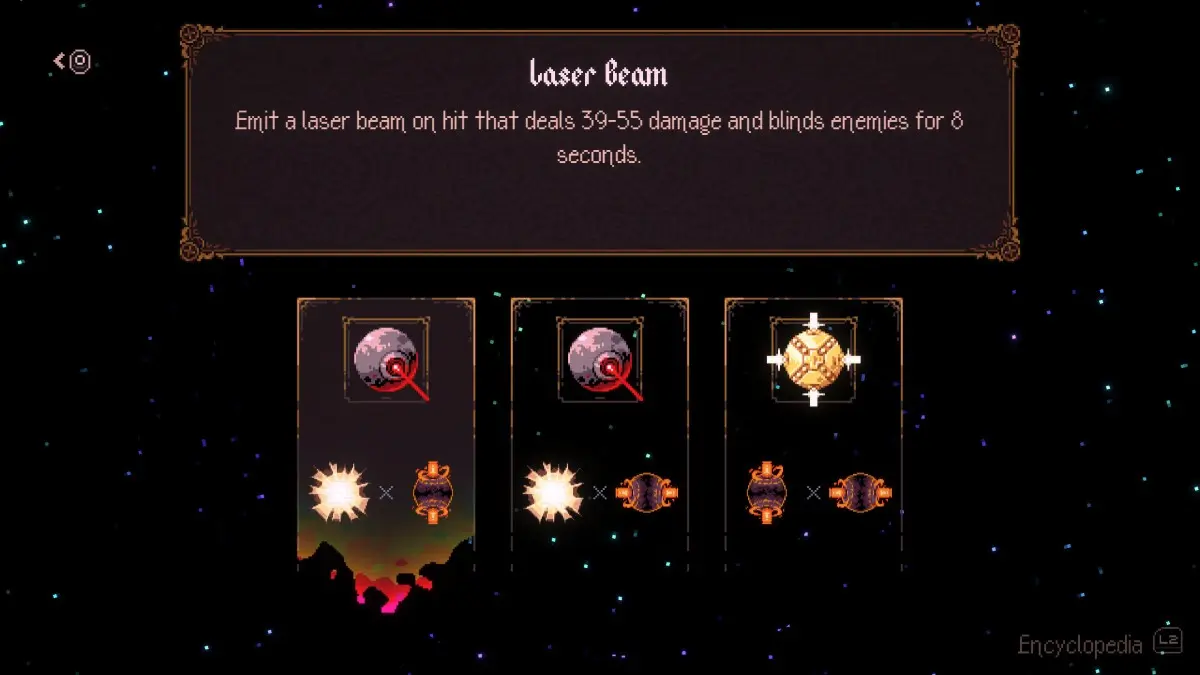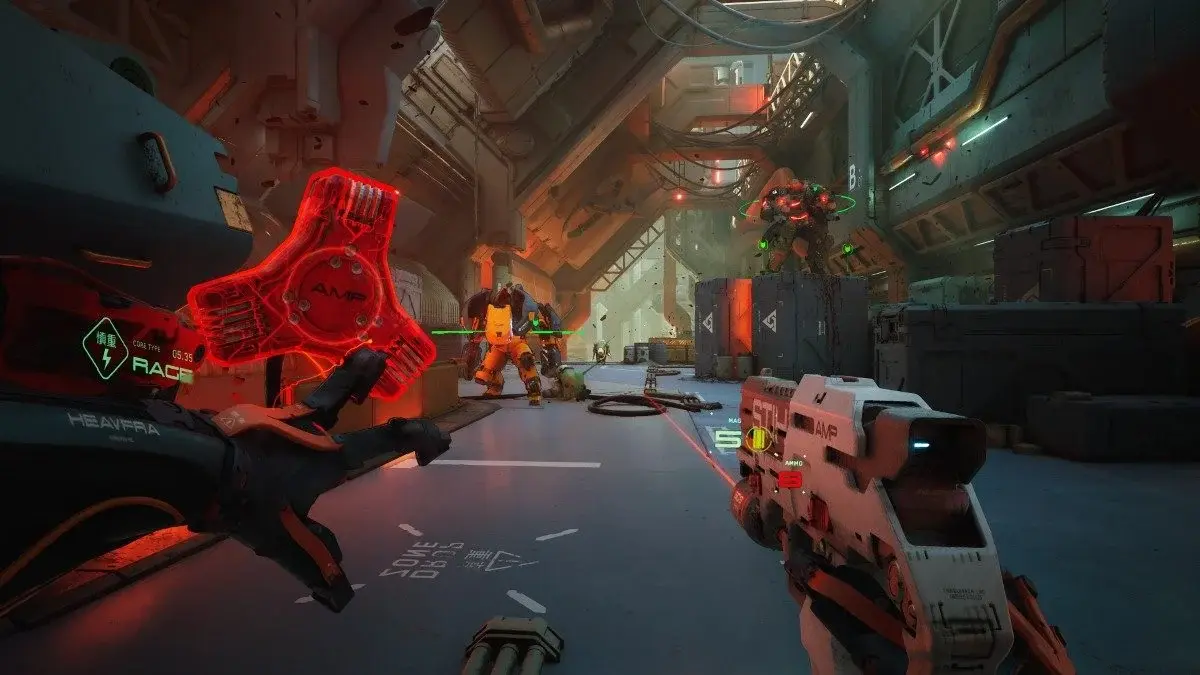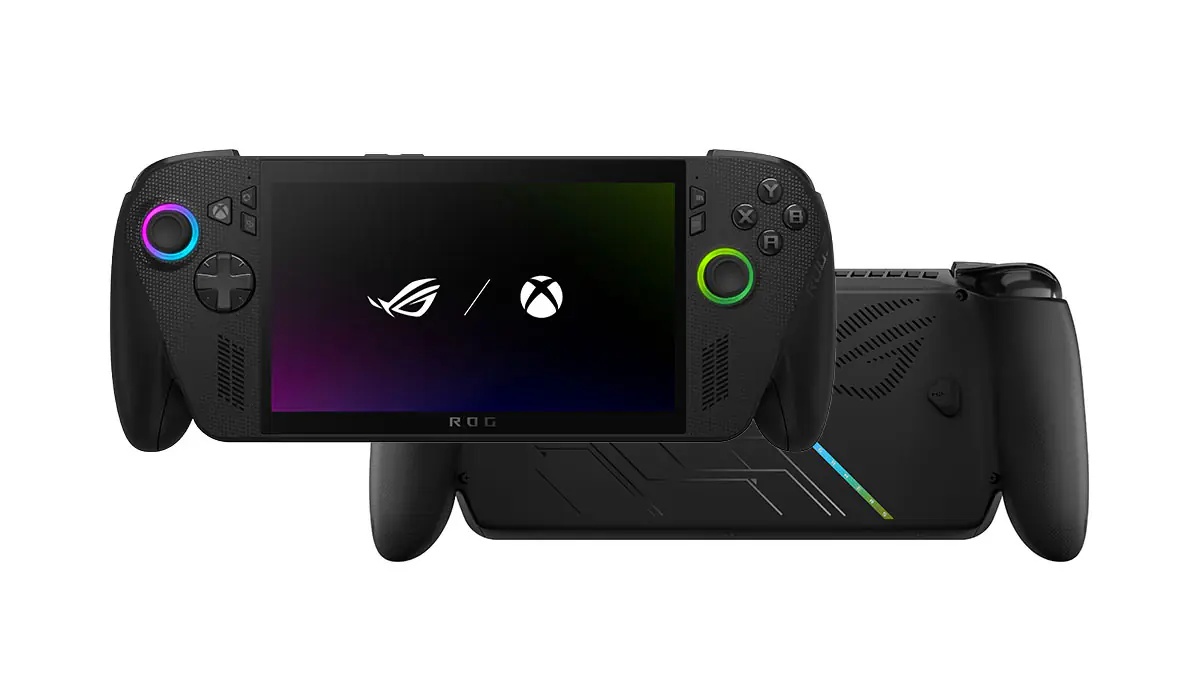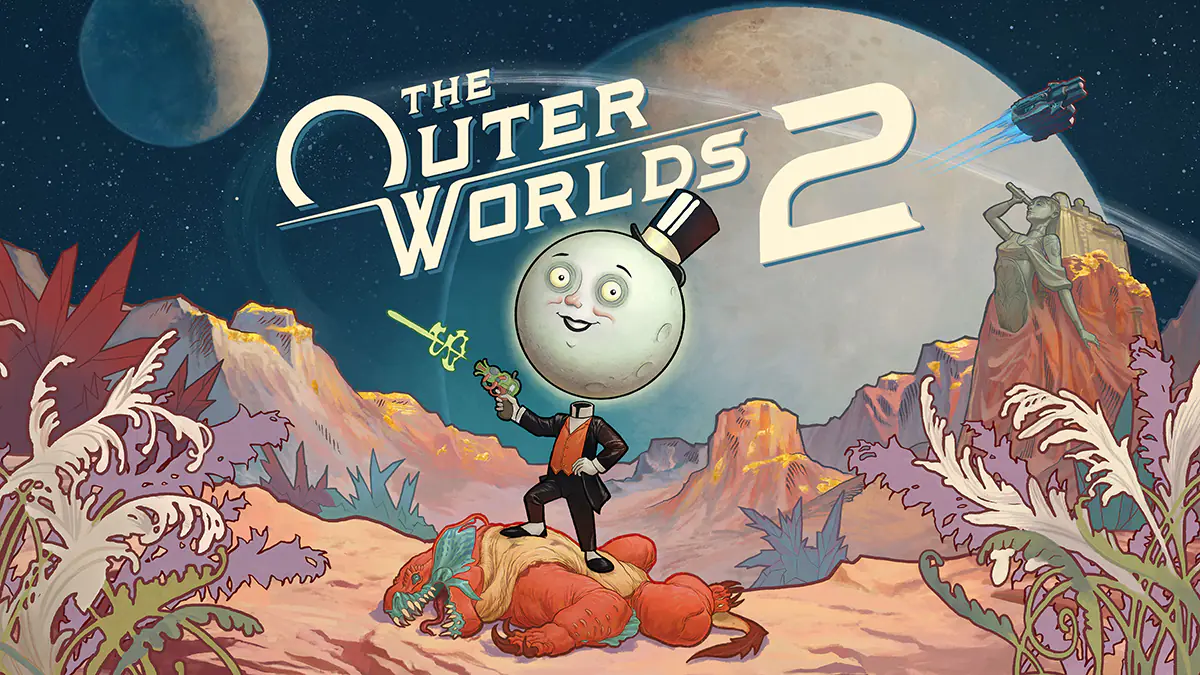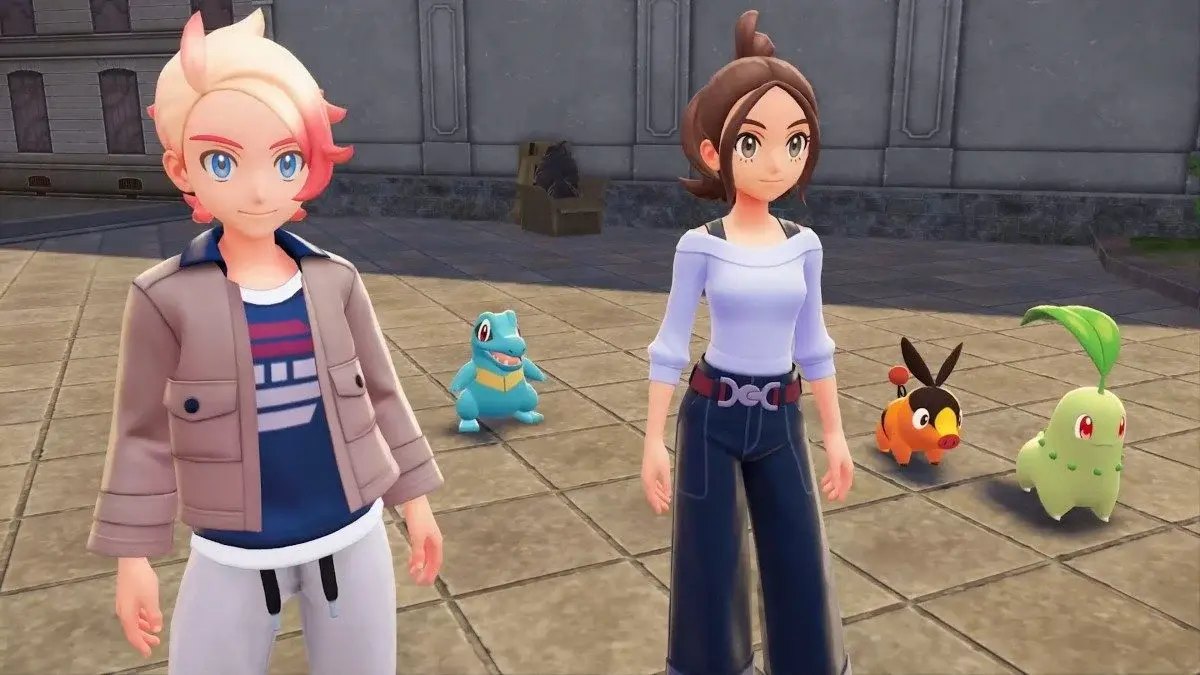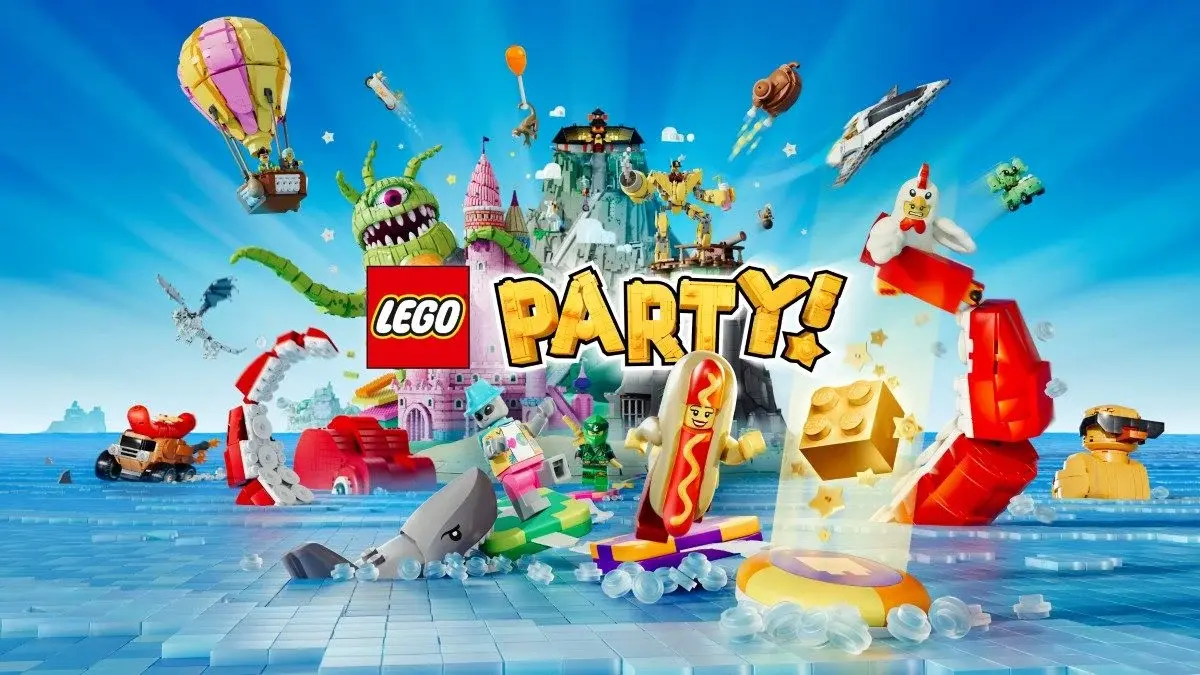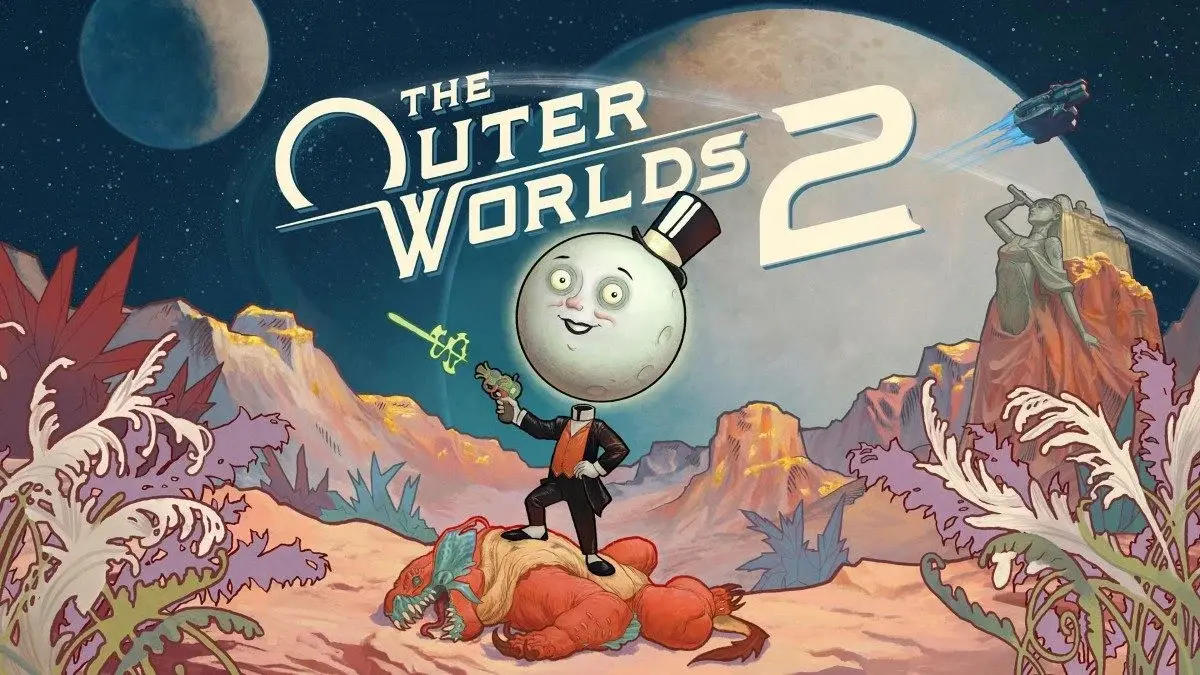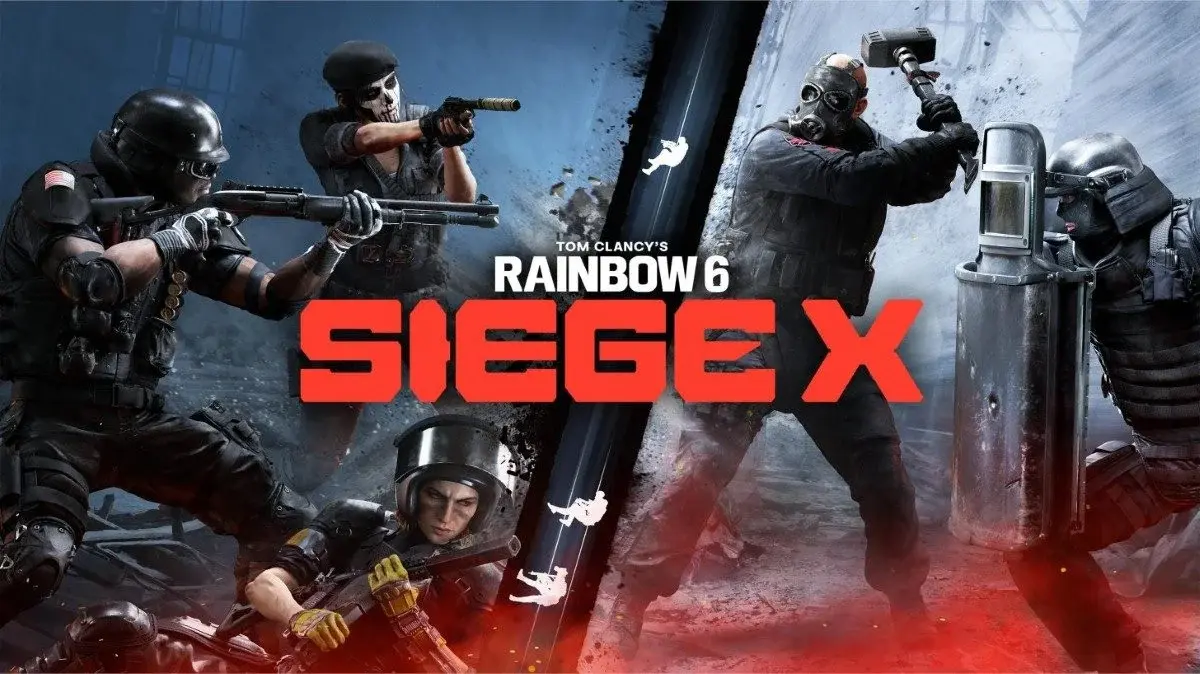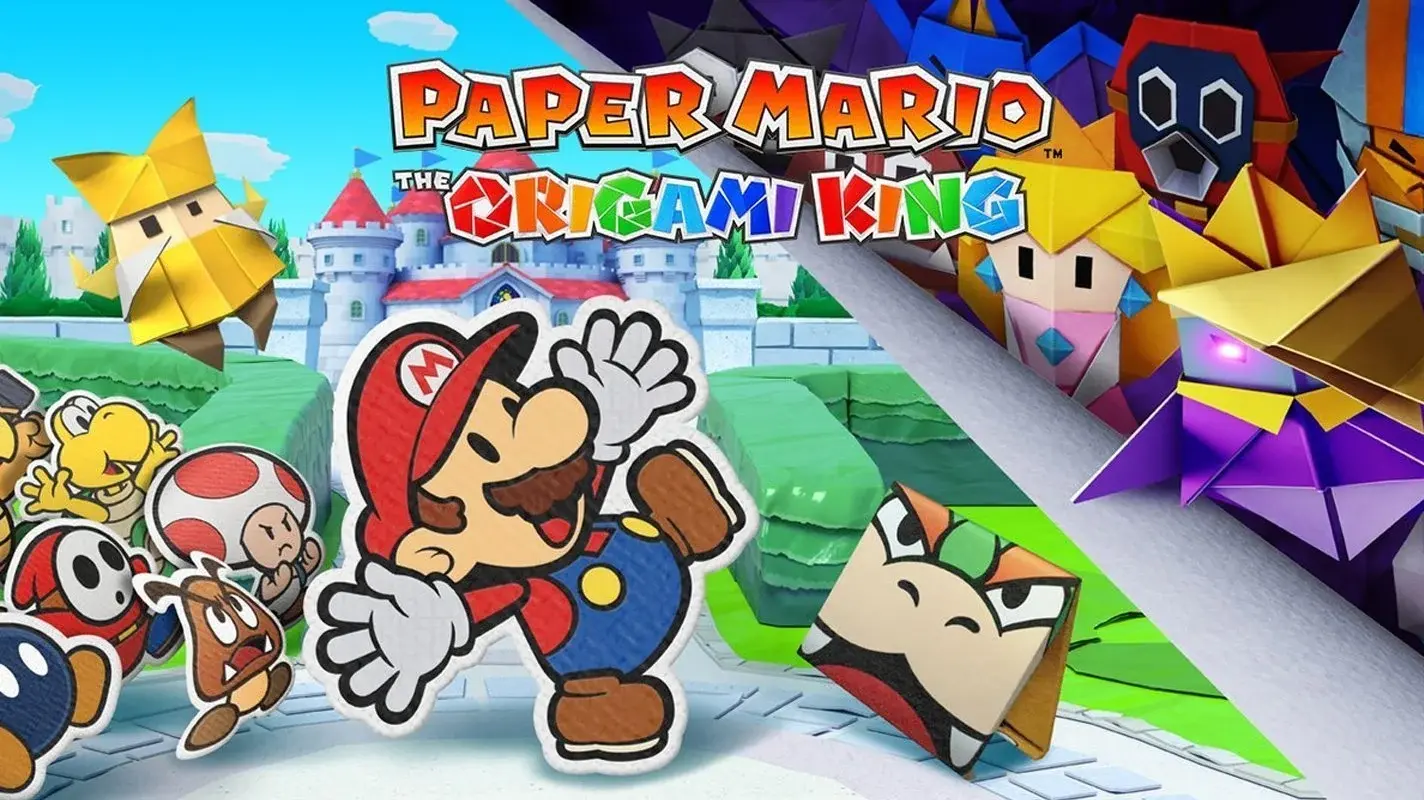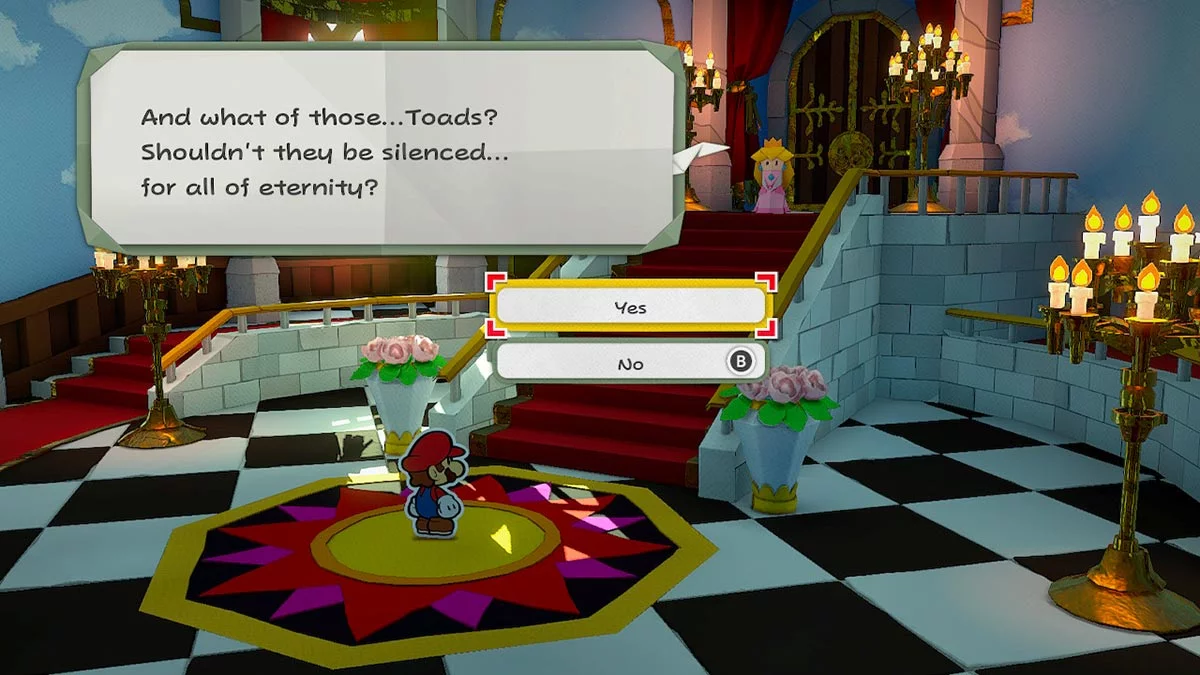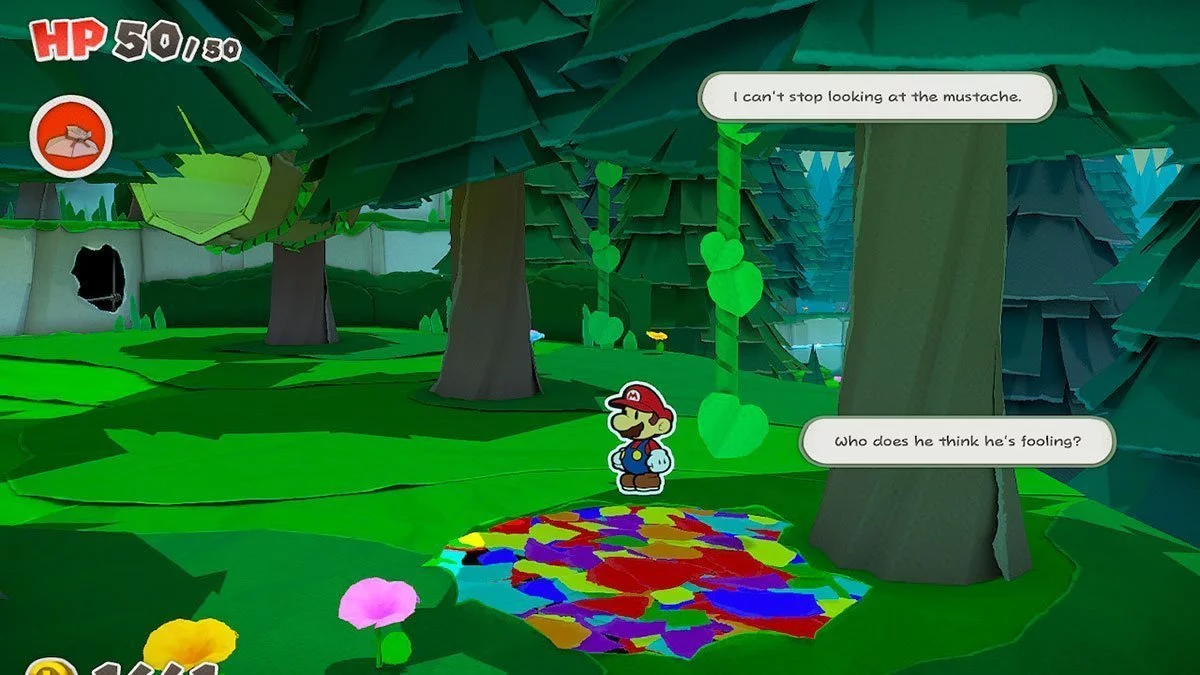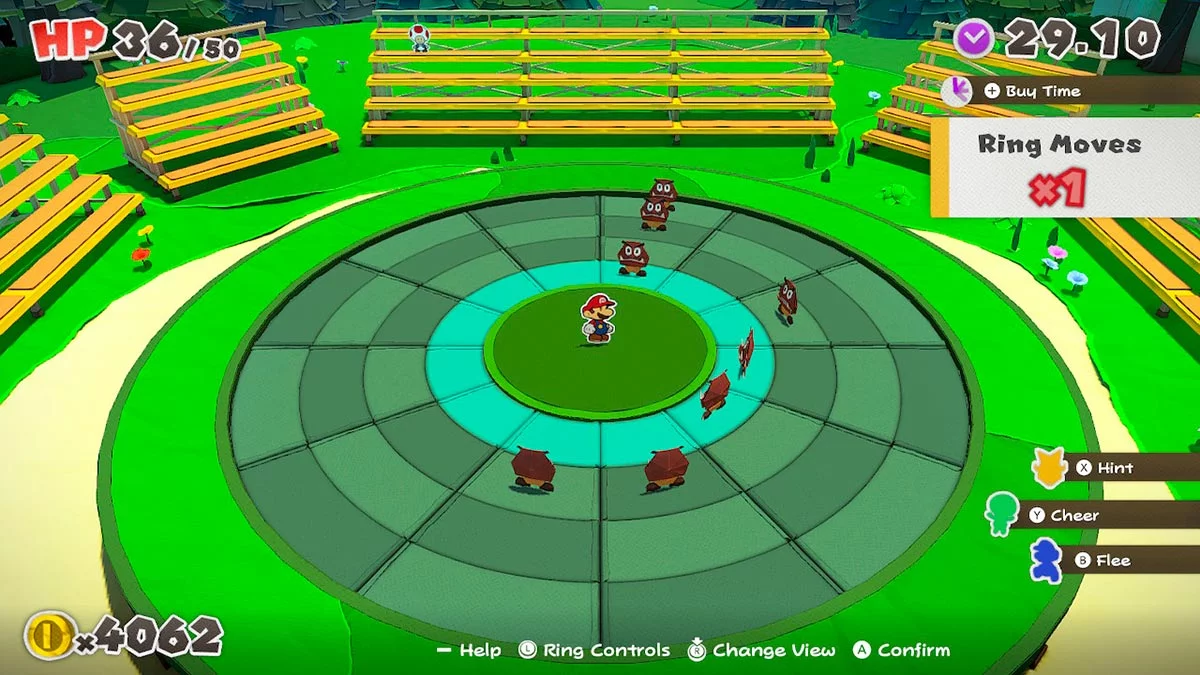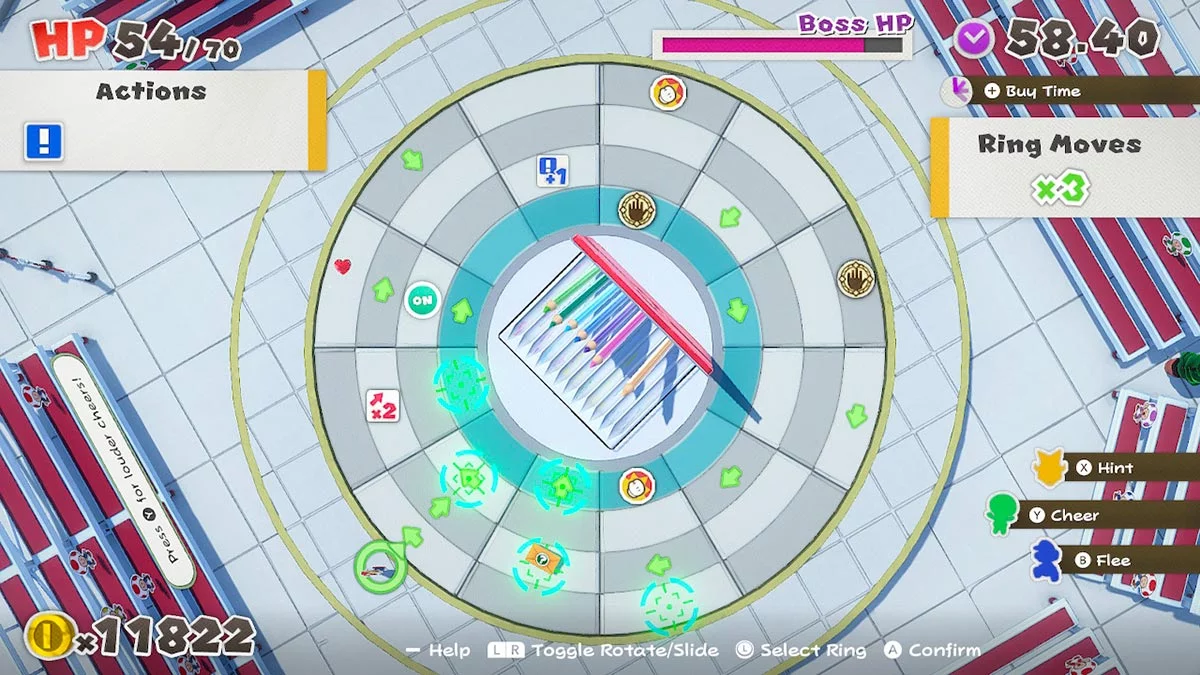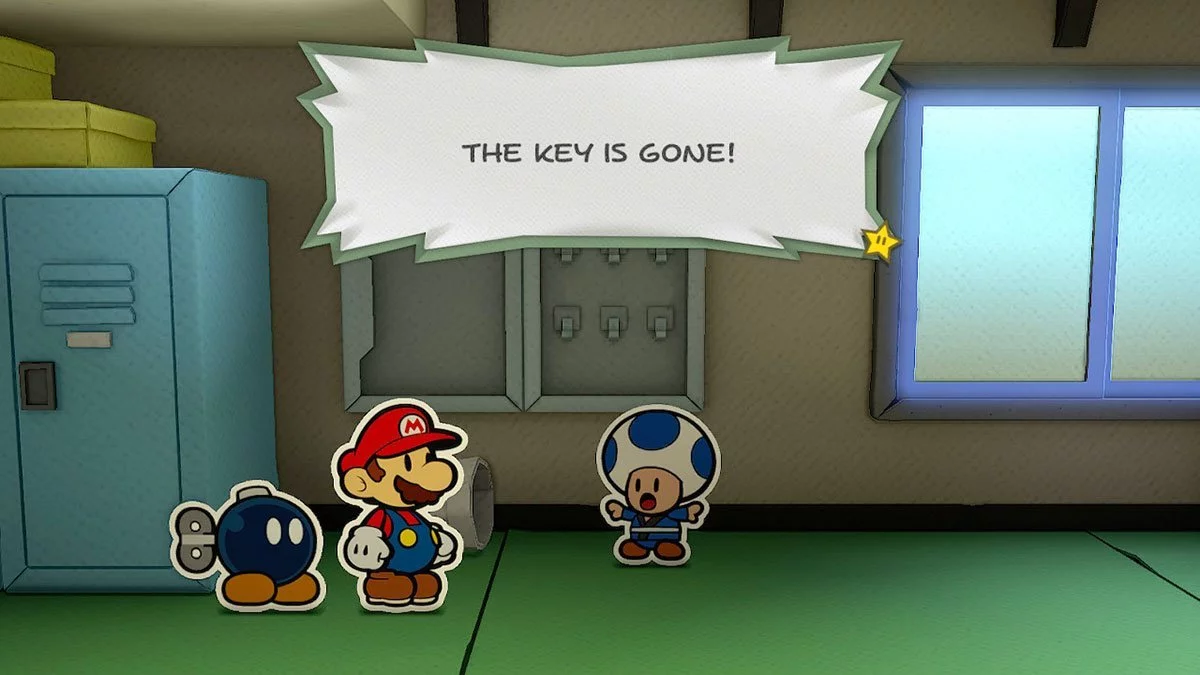Paper Mario closed the book on its original role-playing formula that evoked childhood dreams of picture books coming to life after the brilliant The Thousand-Year Door. Paper Mario The Origami King continues the franchise’s attempt to redefine itself in a genre-hopping search that’s followed ever since. It is not the return to the N64/GameCube blueprint I had hoped for, but nor does it retread the shared path of Sticker Star and Color Splash. With a new open world focused on exploration, a revised combat structure and a greater emphasis on plot, The Origami King firmly establishes Paper Mario foremost as an action-adventure game, drastically slowed down by the pacing of turn-based combat.
While there are nods to some of the role-playing greats, Paper Mario is clearly intent on shedding its RPG typecasting. Intelligent Systems has reduced the role-playing elements to the bare minimum, effectively removing character progression entirely, and simplifying everything else, in a trade-off to expand the world. It succeeds in its goal to refresh the now 20-year-old franchise, by replacing the familiar linear chapter progression with an open world to explore — and explore you must, as backtracking is deeply ingrained in the design.
In a familiar tale, (regular ol’ flat paper) Mario and Luigi accept an invitation from Princess Peach to attend a special origami festival in Toad Town. I suppose it’s only logical that origami is the celebrity of the paper world. The brothers arrive to find total chaos. The once bustling town is practically deserted and the normally welcoming, perfectly flat paper Peach has been folded into a heartless, cold origami imposter. The brothers Mario quickly ascertain that origami mightn’t be that cool after all.
Peach has prayed victim to the devious King Olly, the titular Origami King, with a strong disdain for anything in the paper-verse that remains flat and creaseless. With a submissive Peach under his control, King Olly dispatches of Mario and takes the Princess’ castle hostage with five colourful streamers anchoring it to a mountain perched ominously in the distance. Fortunately for Mario, he soon meets Olivia, one of the few folded inhabitants of the Origami Kingdom willing to fight for justice against the evil King — who happens to be her brother — and the two join forces to free the castle from the clutches of the delightfully devilish streamers and restore Toad Town to its original flat state.
The Origami King has a greater focus on narrative than past instalments, but the synopsis does it no favours. In earnest, the big, bad king malarkey is merely a gameplay device, as the evil streamers point you in the right direction. It is the characters that make Paper Mario worth playing, and while some of their banter is a little goofy, The Origami King is a funny, charming and endearing game that doesn’t take itself too seriously. It pokes fun at itself, the Mario franchise and even Nintendo’s stable more broadly, and has plenty of laughs along they way.
That journey is largely in your hands-on, and while it prompts you on where to venture next, less patient players may find themselves relying on internet advice on how to progress. Olivia offers hints, and the five streamers act as background waypoints, but knowing when to backtrack, when to explore and when to push forward is up to you — it really depends on how many collectibles you want.
Combat has been overhauled with the addition of a puzzle before each turn-based battle sequence starts. When play begins, Mario stands in the centre of a circular board and enemies scatter themselves around him, like planets orbiting the sun. Under a strict time limit, you have a set number of turns — depending on the number of enemies — to move several rings the enemies are stationed upon to line them up.
A row of four enemies allows Mario to jump on them all in a single turn, while a cluster two rows deep can be smacked with a single swing of the hammer. While combat is presented as random encounters, the puzzles to commence proceedings all have a correct solution; get it right, and waltz through the battle without giving the enemies a single opportunity to counterattack.
This is where The Origami King starts to unravel. After the line-up phase, the battle plays out similar to past games, with Mario selecting an attack or item and dishing out a little extra damage if you perfect your timing. He has stronger boots and hammers that can be equipped between fights, and while they break in battle, they are easily replaced. It all works very well, but it doesn’t suit the flow of the game. Introducing a puzzle element to every battle extends the duration of these encounters, and that is at odds with a game that otherwise encourages you to explore far corners for collectible trophies and a legion of crumpled up Toads awaiting Mario to save them.
It is compounded by the lack of experience points. Instead, Mario levels up, becoming stronger and gaining more health points, at predetermined moments and when finding power-ups scattered around the world. The reward for dispatching folded minions in battle is coins and confetti. Mario is armed with the latter to fill in the great many holes that litter Toad Town, some of which are required to solve puzzles and progress, but most just reward you with…more coins. These are used to buy items and replacement weapons for battle, or can be used to add time to the line-up clock, but you have such an abundance of riches that there is no incentive to complete a wild encounter.
After the opening hours, by design, Paper Mario The Origami King encourages you to avoid or flee battles, as they drastically slow the pace of the game, offer no meaningful reward and frankly become pointless; there’s no point battling just to earn coins to spend on items for the next battle you don’t need to do. There are some linear dungeon-style segments where clearing out enemies enables you to progress, reminiscent of the classic Paper Mario design. Here, defeating waves of enemies serves a purpose and can be appreciated, but in general play combat quickly becomes tedious.
Boss fights are a different beast and flip the state of play, with the boss in the centre of the ring — like they are standing on the bullseye of a dartboard — and Mario stranded on the outside. With no other enemies the mix, Mario has to make his way to the centre by arranging the rings, which contain arrows pushing him in a certain different, attacks, power-ups or items. Each boss has its own unique hook, which introduces an element of trial and error that doesn’t exist in normal combat. It’s a different take of the puzzles within combat design, and you may even fail against some of the tougher folded head honchos on the first attempt; but that’s rare, and when it does occur, it’s merely a matter of remembering the pattern to ensure a resounding victory during the rematch.
The more I dwell on combat, the more I loathe how much time it takes away from the wider experience, which is delightful. The open world design is fantastic, and hunting for collectibles becomes a game within itself — and for many, saving crinkled Toads will become an honorary primary objective. The puzzles are fun to solve and require some forethought, especially when you nab a key item well before it is actually required, but that’s the nature of a genuine open world. The streamers guide your journey, but Mario is fairly free to wander beyond the beaten path and find his way into hidden nooks and crannies.
You will want to explore because, in handheld mode or on TV, Paper Mario The Origami King looks fantastic. The crisp lines and vibrant colours are an amazing sight to behold, and the variety of environments look like they have been pulled directly from a level design art show — the art of Paper Mario would make a fantastic display when PAX returns from hibernation.
Paper Mario The Origami King is a delightfully charming game, with a vibrant open world to explore and endearing characters that are genuinely funny, so long as you can handle a healthy dose of dad jokes. While the open world design is a strong step forward, the slow combat system is completely at odds with the action-adventure focus. With no worthwhile reward for completing these tedious encounters, The Origami King encourages you to explore its varied world while avoiding unessential combat. Paper Mario has long retired its role-playing origins and firmly established itself as an action-adventure game. It has nailed the adventure game, but is still working out how to best apply the action.
Paper Mario The Origami King was reviewed using a promotional code on Switch, as provided by the publisher. Click here to learn more about Stevivor’s scoring scale.
This article may contain affiliate links, meaning we could earn a small commission if you click-through and make a purchase. Stevivor is an independent outlet and our journalism is in no way influenced by any advertiser or commercial initiative.

